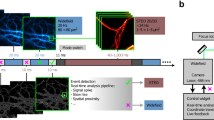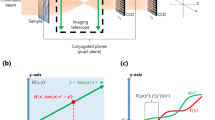Abstract
IN physiological laboratories several routine experiments are in use for demonstrating phenomena of the kind described by Capt. C. J. P. Cave (NATURE, December 13, p. 284). These phenomena all support Hering's theory of the reciprocal after-effects of stimulation (see W. H. R. Rivers in Schäfer's “Text-book of Physiology,” vol. ii., pp. 1146–47, especially fourth paragraph, p. 1147). The seat of illusion begins at the retina, but (as hinted in my letter on p. 165, November 1) involves all the intricate labyrinth of nerve tissue from the retina to the highest sensory and motor centres.
This is a preview of subscription content, access via your institution
Access options
Subscribe to this journal
Receive 51 print issues and online access
$199.00 per year
only $3.90 per issue
Buy this article
- Purchase on Springer Link
- Instant access to full article PDF
Prices may be subject to local taxes which are calculated during checkout
Similar content being viewed by others
Author information
Authors and Affiliations
Rights and permissions
About this article
Cite this article
ALLEN, F. An Optical Phenomenon. Nature 100, 324–325 (1917). https://doi.org/10.1038/100324e0
Issue Date:
DOI: https://doi.org/10.1038/100324e0
Comments
By submitting a comment you agree to abide by our Terms and Community Guidelines. If you find something abusive or that does not comply with our terms or guidelines please flag it as inappropriate.



